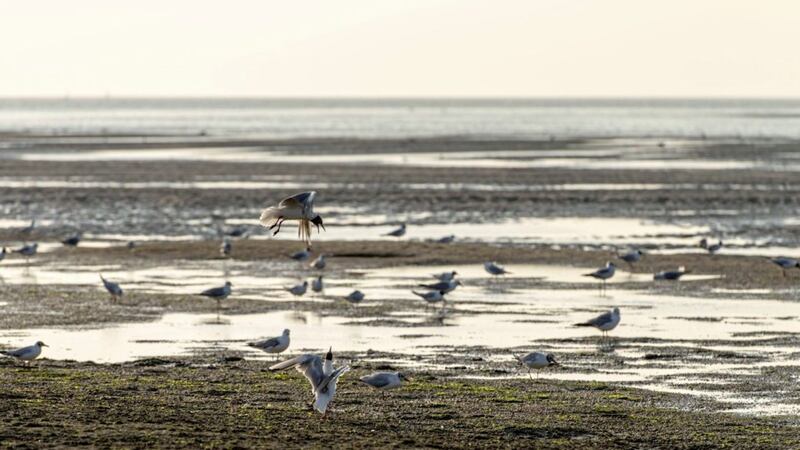EVERY year, thousands of foreign visitors descend on the marshlands of northern France, jostling and screeching for a comfortable spot on Picardy's nutrient-rich shores. Although many of these temporary residents plan extended stays, none arrive with any luggage. Dressed only in their finest plumage, they have all the attire needed for a beach break.
Sitting on the sandbanks of Saint-Valery-sur-Somme, exposed now the tide has inched furtively away, I'm joined by a gaggle of these outsiders who – like me – have come to enjoy the sun and seafood. But unlike most holidaymakers eager to soak up the surroundings, these avian drop-ins have become a spectacle in their own right.
More than 300 species of waders, shorebirds and other ornithological fancies pass through this region, many en route from northern Europe to Africa, making it a wildlife focus for nature lovers in France.
Yet, although it's only a 90-minute drive from Calais (in itself, a 90-minute ferry hop from Dover), few holidaymakers from Britain or Ireland come here. Many simply pass through on a mission to reach sun-soaked beaches in the south or to pay respects to solemn war memorials commemorating the Somme's darkest hours.
But beyond the blood-red poppy fields, other natural wonders colour the landscape – inky blue river estuaries stretch their fingers into the Channel, a rainbow of wild flowers climb pebble and flint walls, and the brilliant white wings of herons settle on trees, like silk handkerchiefs surrendered by the wind.
Comprising 200 hectares of dunes, pine forests and salt marshes in the Somme Bay, the Marquenterre nature park provides a refuge for both resident and migratory birds.
Serious twitchers and amateur observers can watch wildlife from a series of pond-side hides or along several signposted nature trails.
Others take horse-and-cart rides across the mudflats, which form part of a larger nature reserve, where mussels are collected and sold in restaurants around the bay.
I spend a good hour in the park's highlight attraction, the heronry. Roosting birds – a mixture of storks, spoonbills and egrets – settle in a dense canopy of boughs and branches as the sun begins to set, crowning the foliage with a halo of angel wings. In peak season (from April until June), about 170 couples nest here.
Originally reclaimed from the sea as an area to farm tulips in the 1940s, Marquenterre opened as a nature reserve in 1973. Like most people who have lived or currently live here, original owner Michel Jeanson was a big fan of birds.
Sculptures of winged wonders decorate street corners and roundabouts all over the bay, and every April a festival of film and photography (Festival des Oiseaux et de la Nature) celebrates avian species.
As we drive along the road to Saint-Valery-sur-Somme, traffic halts to allow a mother duck and her waddling clan a safe amble across the road. Birds are first-class citizens here, no less.
A medieval commune once visited by William the Conqueror and Joan of Arc (who was imprisoned here), Saint-Valery-sur-Somme is now an idyllic waterfront retreat. These days, the only risk of invasion comes from soaring sunflowers and towering foxgloves threatening to take over the ramparts.
Year round, more than 1,000 plants flourish in L'Herbarium, a secret garden cultivated by Augustine nuns in the grounds of a 16th century hospital. I stoop to enter through a battered blue wooden doorway, stepping back hundreds of years into an even sleepier, bucolic world.
Several streets surrounding the garden have also been transformed into botanical pathways, lined with a buzz of petals and bees. Fishermen's cottages decorated with driftwood sail south towards the riverside promenade, where pots of steaming moules frites entice salivating diners and fresh samphire is sold in pert bundles from market stalls.
The salty taste of seawater clings to my lips, while the ebb and flow of water laps at my ears.
As the tide races back before bedtime and floods the estuary, sandy horizons become a liquid blue and grazing sheep scamper to higher ground for fear of getting hooves wet. (Yes, shepherds do herd their flocks through the dunes.)
Hundreds of birds take flight and glide overhead – some arriving, others fluttering goodbye. The perfect beach companions, they cause little disturbance and go as they came, leaving only footprints behind.
TRAVEL FACTS
:: Sarah Marshall was a guest of DFDS (www.dfds.co.uk; 0871 5747235) who offers return fares from Dover to Calais from £78 for a car and up to nine passengers.



